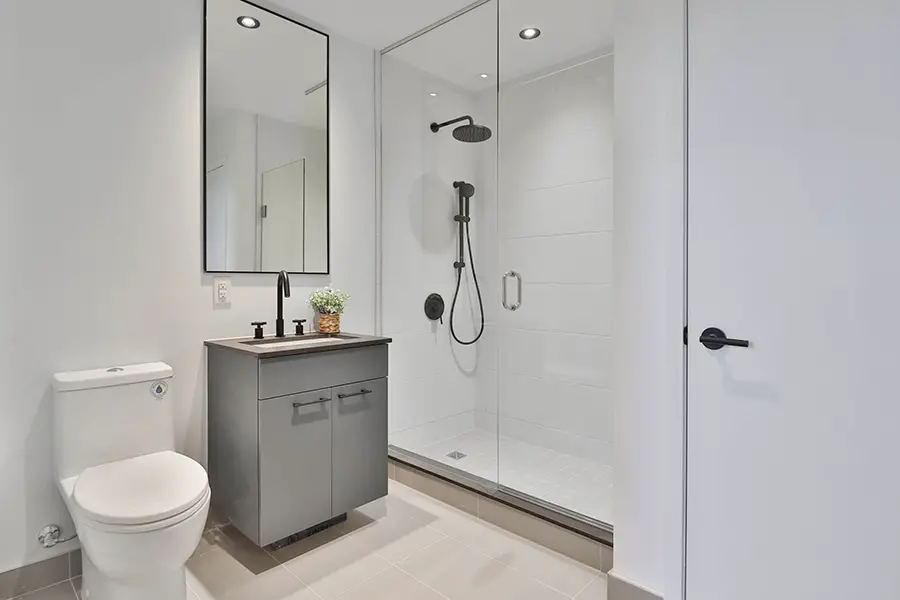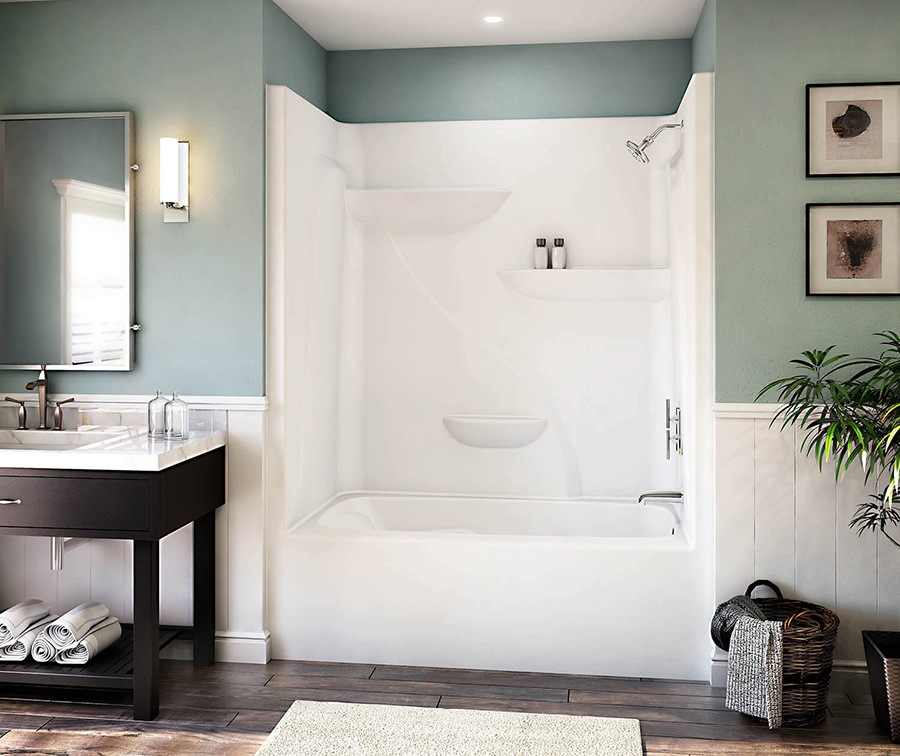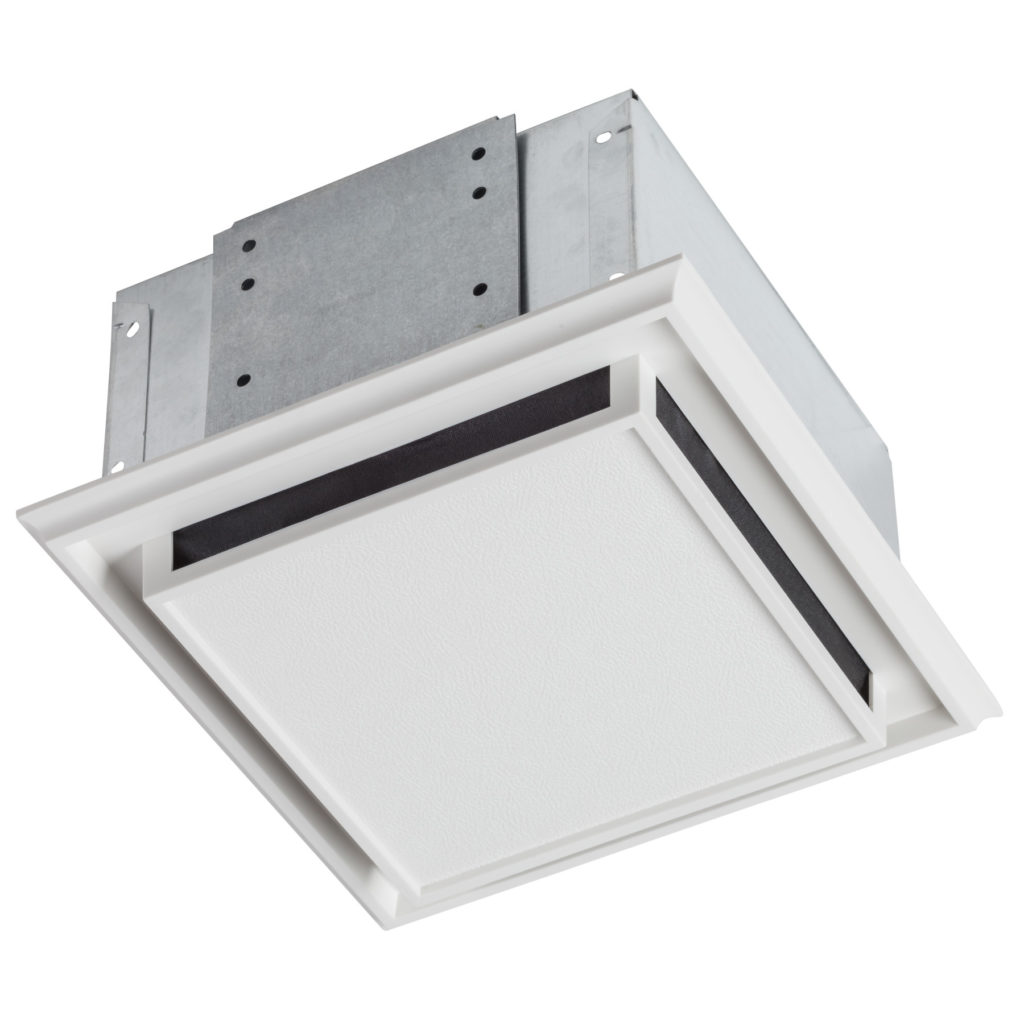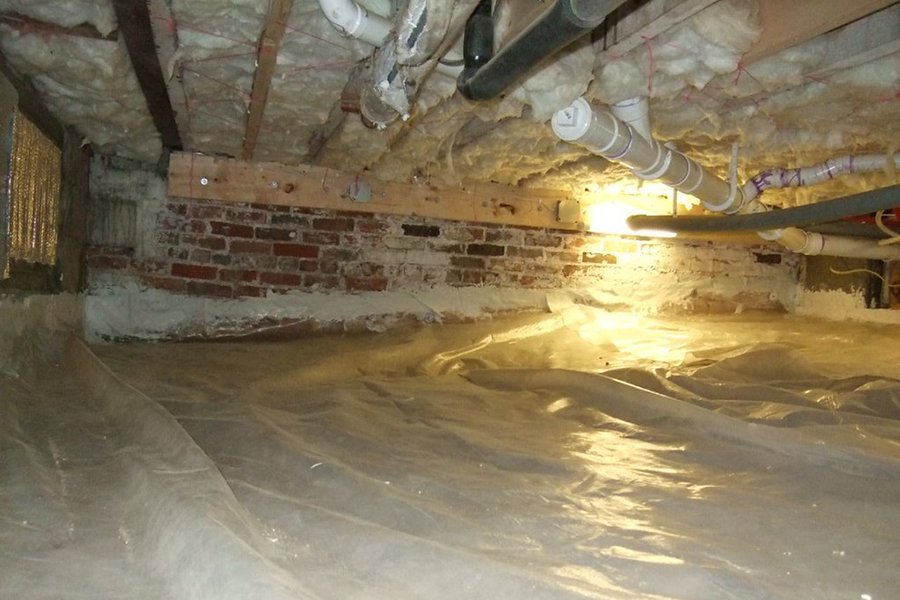Most of us are used to flipping a switch as we enter a bathroom, allowing an efficient exhaust fan to remove and replace the air inside. However, for bathrooms without that helpful switch, or for people who are in an environment where the fan just doesn’t cut it, dehumidifiers are a huge asset for moisture management. This article covers what to consider when adding a bathroom dehumidifier to your space.
Why do I need a dehumidifier in my bathroom?
Everyone knows that bathrooms are humid, moisture-laden areas, but due to construction or location, some bathrooms have higher humidity levels than others. As a general rule, 30%-50% humidity is the safe zone indoors, and over 50% indoor humidity can create both health and structural problems for your home and its inhabitants. You should consider a dehumidifier if your bathroom is above 50% humidity or if it feels uncomfortably humid all the time.
While most newer bathrooms have a forced exterior ventilation system, some older homes or apartments may not be up to code. If the bathroom is windowless and away from any exterior walls, or if it is in a basement, the environment may already be prone to high humidity and the long ductwork may make the exhaust fan less efficient.
If you live in a humid climate, near the equator, in a coastal region, or other factors are increasing the overall humidity in your home and/or bathroom, it is likely time to consider a dehumidifier.
Dehumidifier vs. Exhaust Fan
Both dehumidifiers and exhaust fans are useful at removing moisture from your bathroom, but there are some unique features and distinctions between the two.
Exhaust fans are best for short-term humidity, and they work faster than a dehumidifier. They take all the air in the room, moisture included, and force it directly outside of the home, while fresh, low-moisture air comes into the room from other areas in the home. However, this requires pre-existing ducting or the construction of new ducting to create a pathway to an exterior wall or roof. Also, the air that is replacing the bathroom air as it is exhausted may also have high levels of humidity.
Exhaust fans take up no extra space in the room, as they are typically ceiling or wall-mounted, so they are a great solution for small spaces or sleek and minimally designed bathrooms.
A dehumidifier, on the other hand, removes humidity (water in its vapor form) from the air, turning it back into its liquid form.
Since water-as-vapor is warm, a dehumidifier has internal cooling coils that cause the moisture in the air to condense, removing the moisture from the air. It then releases hot, very dry air, back into the room for circulation, continuously cycling until humidity levels in the air are lowered. The cooled water is collected in a reservoir, which can then be emptied outside or down a drain. Most electric dehumidifiers have internal humidity sensors and will activate themselves when moisture levels get too high and become idle again when humidity levels are low.
Some dehumidifiers have long hoses or options for “permanent” drainage, meaning that you won’t have to manually empty the reservoir when it is full. Instead, a detachable hose is connected to a nearby drain, allowing it to continuously rid water as it operates. It may or may not have a pump to assist the water to the drain.
Will a dehumidifier stop mold from growing in my bathroom?
Dehumidifiers are a strong defensive move toward stopping potential microbial growth in a bathroom. Of course, if microbial growth is already evident, it is extremely important to treat it as soon as possible! Mold loves warm, moist areas, and spores stirred up in the air will only spread the growth more.
Once all evidence of microbial growth has been treated (or if there was not any mold to begin with), a dehumidifier, used properly, will slow and potentially prevent future mold growth. That being said, the foremost point to remember is that dehumidifiers are not mold-killing machines, and they do not remove existing mold growth or spores.
Bathroom dehumidifier downsides
As an excellent ductless moisture management option, dehumidifiers do still have some downsides. They are usually freestanding, so they may take up valuable “real estate” in small bathrooms. While some small ones could be housed on a shelf, many are freestanding, floor devices.
Additionally, many dehumidifiers require electricity to run, and some bathrooms only have one outlet. The energy needed to keep the dehumidifier plugged in and constantly reading/treating humidity levels could be a concern.
As previously mentioned, the necessity of removing the excess water by emptying the reservoir or directing a hose to a drain may be a hindrance for some, though bathrooms certainly have drains close by!
Tips for Frequent Use
Here are a few tips to get the most out of your dehumidifier:
- Use the onboard controls to set your humidity levels. This way, the dehumidifier isn’t constantly running, and instead responds to high humidity conditions when necessary.
- Choose a good spot where the air can flow around the machine easily.
- Do your routine maintenance – Keep an eye on your machine and its output. Empty the tank when it’s full, and clean your filter and hoses when necessary.
- Keep the room warmer to prevent condensation, and maintain a controlled environment. The dehumidifier will do its best work when it isn’t also trying to remove moisture from down the hallway or a neighboring bedroom!
What to consider when choosing a dehumidifier
How much space do you have available? Dehumidifiers come in many sizes, with ratings for how big of a room they can effectively treat, similar to an air conditioner.
If you have a good spot in mind, can the dehumidifier easily reach a drain? Or will you need to empty the reservoir? If so, how frequently? Perhaps a larger or smaller reservoir would be better, depending on your drainage options. Many larger dehumidifiers also come with 4 wheels, to allow for easier movement and drainage, while some are wall-mounted or counter-sized.
How much moisture does it remove from the air? Many manufacturers will list how many ounces the unit can remove per day. Generally, the smaller the dehumidifier, the less humidity it can remove in a given time.
If you don’t have the option to plug in a dehumidifier, an energy-efficient silica-gel moisture absorber (another form of dehumidifier) could be a great option. These work best when the manufacturer’s suggestions are closely followed.
In terms of interface, how much or how little control do you want? Some have LED screens and various buttons for different functions, some are simply “plug-and-go”. Knowing how many functions and what information you’d like to have will help narrow down features and devices.
Best dehumidifier options
Best overall value: Frigidaire Dehumidifier with 22 Pint Capacity
20″h x 15.5″w x 11.34″d
- Has options like fan speed and humidity level
- Automatically turns off and on as needed
- Washable air filter
- Energy Star rated
- Plenty of capacity for a bathroom
- Has a continuous drain option but no pump (but this model does!)
- Easy to move around with wheels
- Check price
Best small option: Pro Breeze Mini (250 sq ft)
6.6″d x 9″w x 12.7″h
- Automatically shuts off when full and has an indicator light
- Removes up to 18oz per day and has a 52 ounce water tank
- Small enough to fit on a shelf or on the vanity, but large enough to remove an adequate amount of water
- Weighs only 3.3 lbs empty
- No option for continuous operation
- Check price
Closing
Overall, the unique features of your space will lead you to the right machine. A dehumidifier is a great moisture management option when exhaust fans aren’t cutting it. There is a wide range of options on the market, and it’s worth taking the time to read reviews and product breakdowns. But for a quick fix and less than $100, you can buy the mini dehumidifier above to start managing moisture right away!






